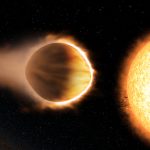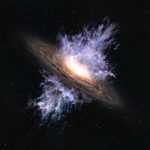Key Takeaways:
- Perseverance rover detected diverse organic molecules on Mars, hinting at potential building blocks of life.
- Organic compounds found aren’t solely evidence of life; they could also form through non-biological processes.
- The study, led by Sunanda Sharma, analyzed data from Perseverance’s SHERLOC instrument within Jezero Crater.
- Organic molecule signs were present in 10 rock samples, spanning approximately 2.3 to 2.6 billion years.
- The findings suggest various origins and formations of organic compounds, mostly linked to water-associated minerals.
In a groundbreaking revelation, NASA’s Perseverance rover has unveiled an intriguing array of organic molecules nestled within the Martian landscape, marking a pivotal discovery that could rewrite our understanding of the Red Planet’s history.
A recent study chronicles the detection of a diverse spectrum of organic compounds, elements composed primarily of carbon and frequently interwoven with hydrogen, oxygen, nitrogen, phosphorus, and sulfur.
This milestone unearths a trove of tantalizing possibilities for astrobiologists, hinting at these compounds’ role as potential building blocks of life. Lead author Sunanda Sharma, a planetary scientist from the California Institute of Technology, underscores their significance in unraveling Mars’s mysteries, while cautiously emphasizing their potential creation through non-biological mechanisms.
Sharma, along with a team of researchers, delved into data beamed back by Perseverance from its landing site within Jezero Crater, an ancient lake basin believed to have once fostered habitable conditions. The crater floor, adorned with clays and minerals, emerges as a potential repository for organic matter, providing a tantalizing glimpse into Mars’s past.
Specifically, the scientists examined data from the Scanning Habitable Environments with Raman and Luminescence for Organics and Chemicals (SHERLOC) instrument onboard Perseverance. SHERLOC is the first tool on Mars capable of conducting fine-scale mapping and analysis of organic molecules.
The researchers focused on SHERLOC data from Máaz and Séítah, two rock formations on the Jezero Crater floor. When ultraviolet light from SHERLOC illuminates organic compounds, they can glow much like material beneath a blacklight. The fingerprint of wavelengths in the glow from a molecule can help identify it.
Focusing on rock formations named Máaz and Séítah, spanning a staggering timeframe of 2.3 to 2.6 billion years, the team uncovered traces of organic compounds in all 10 samples drilled by Perseverance.

The diversity and spatial variation of these compounds within Máaz and Séítah hint at multiple sources, possibly linked to diverse minerals and mechanisms shaped by water-related processes. Sharma expresses excitement at this revelation, highlighting the prospect of distinct formation, preservation, or transportation methods across the crater and the broader Martian surface.
Despite this groundbreaking revelation, identifying the specific organic molecules remains elusive. Sharma underscores the necessity of sample return missions to Earth to ascertain their presence definitively. The study, published in Nature, underscores the importance of these findings in shaping future Mars exploration endeavors.
This discovery serves as a beacon of hope, reigniting fervor among scientists and space enthusiasts, while also humbling us with the complexity of unraveling Martian secrets. It doesn’t conclusively signal the existence of life on Mars, emphasizing the need for meticulous investigation to discern between biological and non-biological origins of these organic compounds.
The scientists detailed their findings online today (July 12) in the journal Nature.


